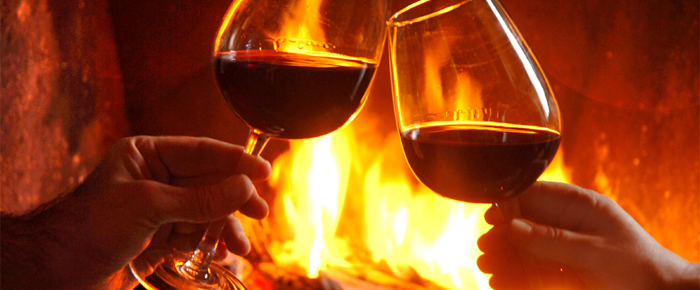
By Rick Riozza
Just as we cover some of the new exciting white wines for springtime and summer, let’s talk about some of the reds which work for the season’s comfort meals and are currently available at our wine stores and shops.
Of course, there’s no simple formula for wines being seasonal; instead, it’s a question of what wines feel like and how a wine pairs not just with food, but also with the surrounding temperature or weather. And obviously, if you are drinking wine with food—how well they pair with the “winter foods” or “summer foods” you are eating?
Summer isn’t the time for thick stews—especially around these desert parts, but rather for lighter fare: salads, fruity dishes, seafood, and so forth. It wouldn’t be appropriate to pair such foods with a heavy Syrah; instead, here you’d prefer to have light and fruity reds and rosés, or light, acidic whites like the three favorite Chardonnay, Pinot Grigio, and/or Sauvignon Blanc. You’ll want a refreshing wine that brings you up, not a heavy wine that feels like it is weighing you down at all.
Winter foods, or perhaps deemed “comfort foods”, tend to be heavier and thicker, have more meat and fat, and tend to “stick to the ribs.” This is not the sort of food which a light, acidic white wine is likely to pair well with. Instead, you’ll want to eat these winter foods with wines that are themselves heavier and thicker — usually deep, strong reds like your three favorite Cabernet Sauvignon, Syrah, or Zinfandel.
Another important consideration in what makes a wine a summer wine or a winter wine is the temperature at which the wine is best served. If a wine is best served a little warmer, then it’s a better wine to drink during the cold winter months when you probably don’t want a cold drink. If a wine is best served colder, then it’s a better wine to drink during the hot summer months when a colder drink is more welcome and more refreshing.
For your enthusiasts, you pretty much know all this already; for you new vino lovers, it’s kind of fun to see how the wine world works and how the game of wine is played.
So what grape varietals are generally considered to produce a “winter red”. Their general characteristics are: Full-Bodied, rich, best served at room temperature and “heavier” all around as to fruit flavors and higher in alcohol. The usual suspects here —at the top of my head, are: Cabernet Sauvignon, Syrah, Pinot Noir, Sangiovese, Rioja, Barolo, Malbec, Tannat, Zinfandel, and Petite Shirah.
Which red wine to choose from? With such a bevy of styles and flavors the options are endless, but here are a few favorites:
Let’s face it, just about everyone who likes red wine likes Cabernets. No “full-bodied” wine list would be complete without a Napa Cab. There are so many styles to this wine. You’ll get classic dark berry flavors (blackberry, blackcurrant, and cassis) with complimentary chocolate and graphite notes. They’re big, brooding and powerful wines. And all that lushness is girdled by some medium or full-on tannins and hints of spice.
And the world loves to pair a Cab with beef, hard cheeses, lamb, pasta with rich meat sauces, sausages, and stews.
Syrah, because of the smoke, spice, black pepper, and meat flavor profile of this wine, it’s a great thing to drink with a big juicy grilled/charred steak. Talk about a comfort food! And what Syrah, originally from the Rhône Valley, has over a Cab and Merlot, is a little higher in natural acidity, which keeps it very “meal-friendly”. Do remember that a “Shiraz” is the same grape but grown in Australia & South Africa.
And speaking of Syrah and its Rhône compatriots, the red Grenache and Mourvédre, these grapes and others, go on to produce the famous Châteauneuf-du-Pape wine, which should probably be pictured in the dictionary as one of the ultimate winter wines; a bit of a splurge, between $40 and $60, but worth it. Infinitely complex, here you get a deep red wine brimming with earth, dark cherry and red fruits, game, herbs, chewy tannins, and delicate spice.
Malbec (affectionately called the “black grape of Cahors”) chimes in for the big winter red list. Originally a French blending grape in Bordeaux, and, predominant in the south-west of France, Malbec found a happy home in Argentina. Grown on the high Andes’ foothills, the wine is smoky and rich with dark blackberry and blackcurrant fruit, structured tannin, and warm oak that lead into a bloom of spice on the finish.
This wine is becoming ever-popular, especially with women who find this red really easy to cuddle up to with the round and easy flavors provided in a medium-bodied setting.
The two definitive “California reds” that have inherently colored our California wine history are the Zinfandel and Petite Sirah. These wines fit the heavy-duty profile of a red that can keep one warm, full & comfy on a cold rainy day.
When one thinks of a Zin, blackberries, black cherries, black currants, and black pepper along with jam, plums, raspberries and spices come to mind. The ones from Amador County can be especially fruit-forward, those from around Dry Creek in Sonoma are more on complexities, with Zins from Lodi adjusting at times between both ends.
Petite Sirah can provide the same black-stuff as the Zins above along with earth, leather, licorice, meat, tar, and violets. A winter red for sure!












































